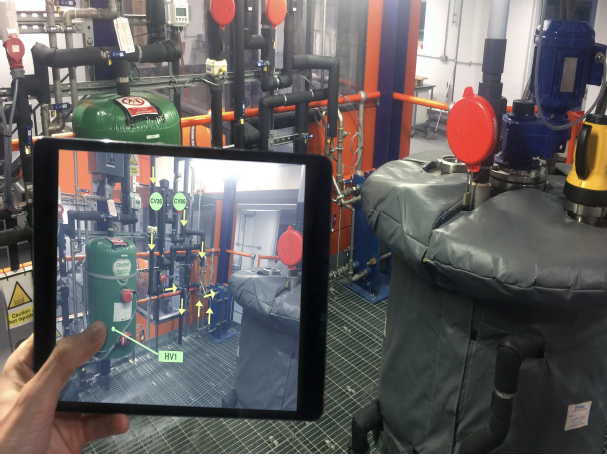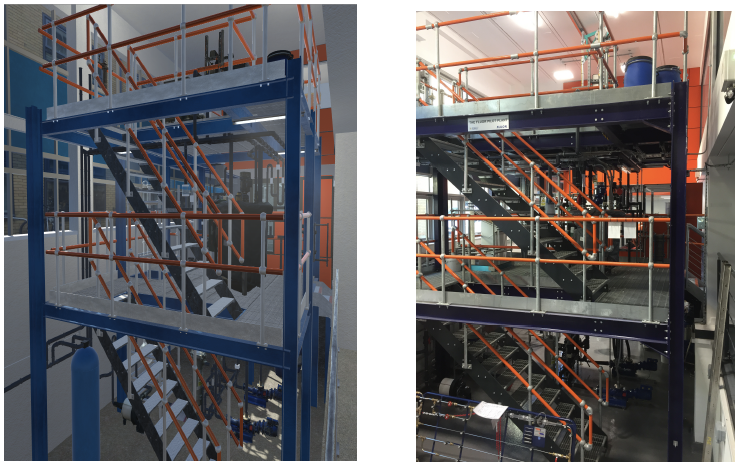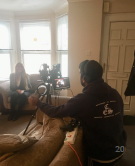Esat Alpay, Faculty of Engineering and Physical Sciences
Recent advances in technology have allowed virtual reality (VR) to become affordable and readily accessible within the gaming community, inspiring its use in many other fields, including training, health care and education. The use of VR in education provides a means for contextualising learning through authentic and engaging scenarios, e.g. the touring and operation of a chemical plant. Through the use of digital twins of laboratory equipment, it also provides flexible learning opportunities whereby students can prepare for laboratory work, undertake virtual experiments or re-experience a physical lab session through a remote, online platform.
Our work has focussed on the creation of realistic, immersive (3D) VR simulations of a chemical plant, specifically the simulation of the Pilot Plant facility within the Department of Chemical and Process Engineering. Moreover, our research and design efforts have concentrated on VR pedagogy for the effective use of such simulations in learning and teaching contexts. For example, the use of a digital tutor (referred to as a non-player character (NPC) in the gaming industry) and gamification principles through timed and competitive activities.
To date, the work has led to a seminal paper on a “taxonomy of virtual and augmented reality applications in educations” (see: https://ieeexplore.ieee.org/document/9466432), as well as evaluation of the student benefits on learning. Specifically, the VR based teaching activity has been evaluated through a randomised non-inferiority trial to test student learning compared to a traditional learning media (publication pending in the European Journal of Engineering Education). The evaluation has demonstrated both student efficacy gains as well as high engagement in the learning activity.
Samples of the simulation, as seen through the eyes of the user (including NPC interaction) are given here:
https://www.youtube.com/watch?v=LGYQ0ThgX5o
https://youtu.be/VWP0ctoajrA
https://youtu.be/wGKBK3ivZOg
In related work, 3D immersive, stereoscopic cinematography has been used to create “story-book” type experiences for student learning. Specifically, 3D scenes have been created by recording student actors, that can then be viewed through headsets. Prompt questions are used that lead to different scenarios being played out, and provide the user with an engaging “like being there” experience. The first use of such immersive cinematography has been for education in work-place ethics, namely issues around conflict of interest and confidentiality.
Augmented reality for training on pilot plant equipment

Simulated and real Pilot Plant comparison

A 3D video camera setup to capture a scene with a student actor
